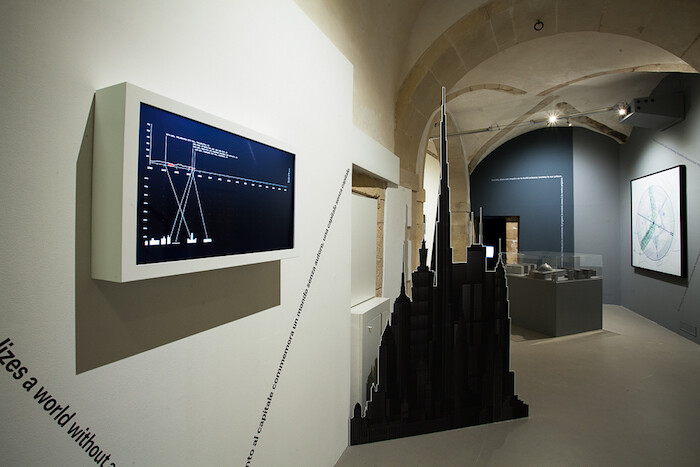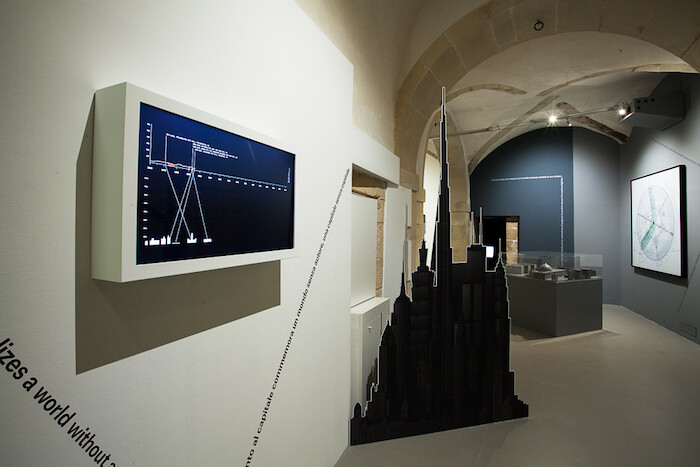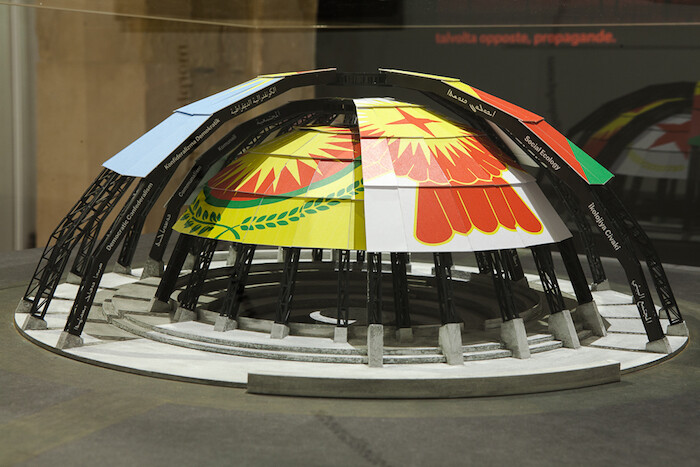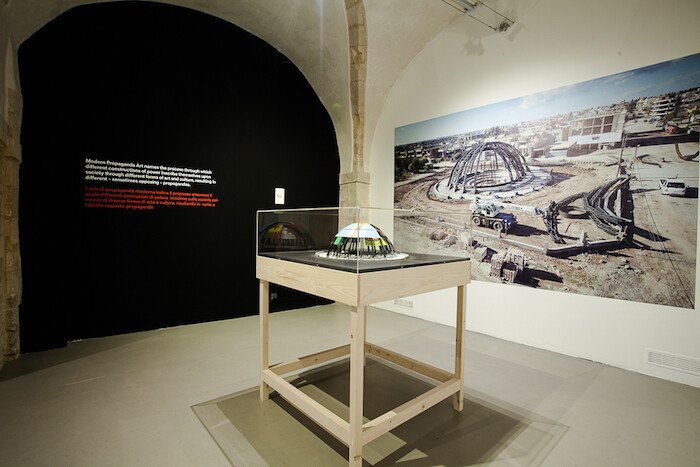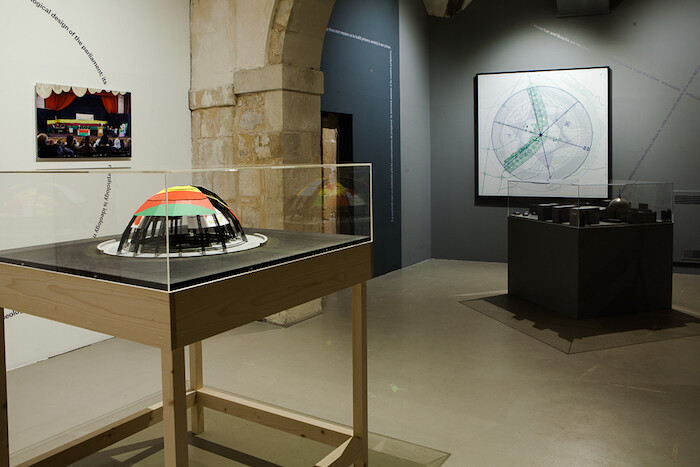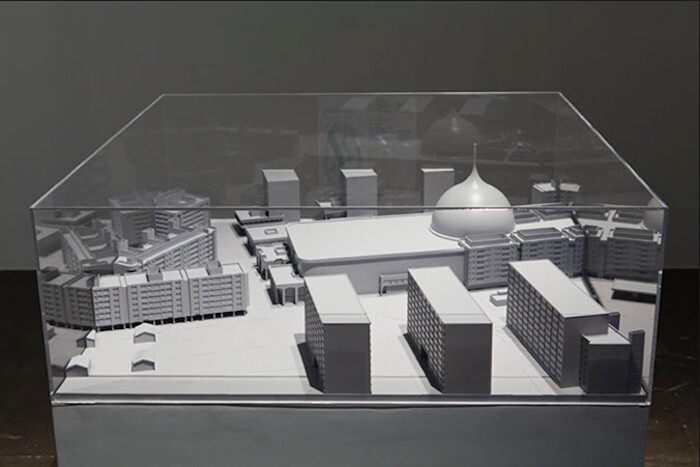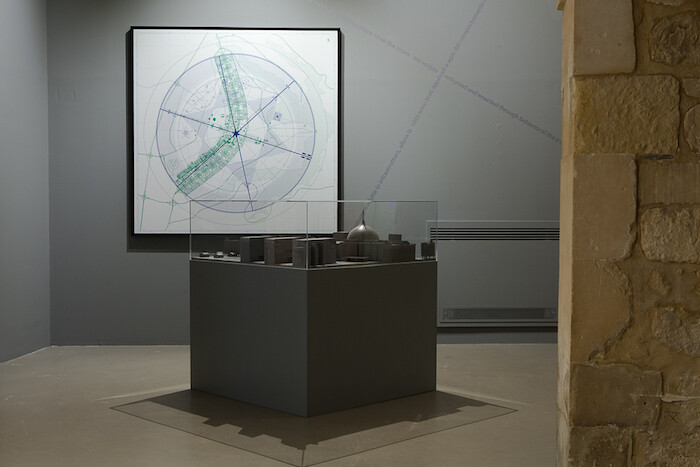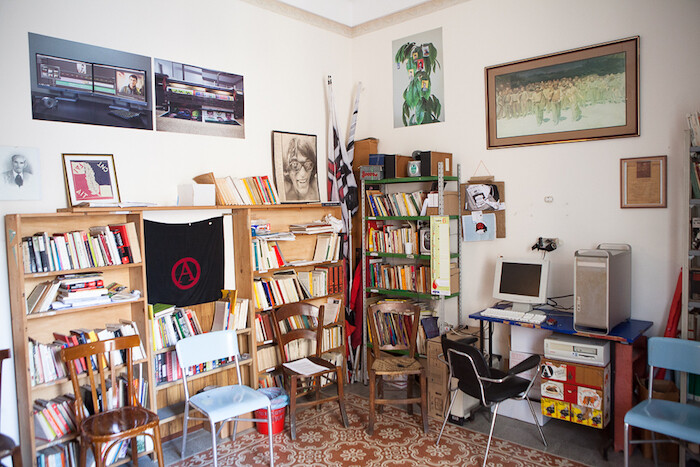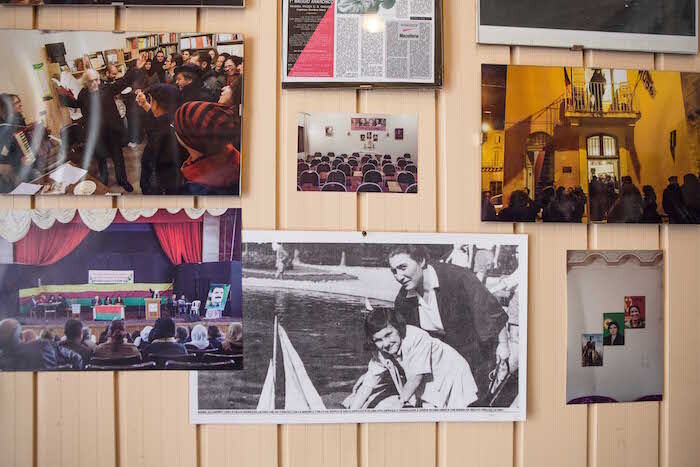Although I usually find conspicuously inarticulate people more annoying than those who are just a bit too articulate, I confess to having harbored a certain reserve toward 35-year-old Dutch artist Jonas Staal. His work as an artist includes doctoral research at the University of Leiden, extensive public lecturing, and setting up the New World Summit, an artistic and political body “dedicated to providing ‘alternative parliaments’ hosting organizations that currently find themselves excluded from democracy.”1 At times during the last five years—the period covered by this solo exhibition at Laveronica, Staal’s first in a commercial gallery—I have found myself wondering whether, for all his eloquence and analytical prowess, he is really making sense.
At a conference organized by BAK in Utrecht in 2012, Staal denounced the CIA-supported Congress for Cultural Freedom for producing only a stage-managed simulacrum of what it purported to promote back in the 1950s and ’60s. “That’s very probably true,” I said to myself, “but then shouldn’t he be more careful with how he stages his own New World Summit?” What exactly happens to the emancipatory potential of a temporary global “parliament” when the invited representatives of stateless peoples, including some organizations accused of terrorism, are put on display in an architecture based on their various flags sorted by color? Is “giving form” (vormgeving, Dutch for “design”) really compatible with “giving voice?” And isn’t the very ambition to remedy perceived lacks through benevolent “giving” a crypto-paternalistic fallacy of art activism?
“Propagandas” is a good occasion to revisit such concerns, and to revise them. Curated by Matteo Lucchetti for Laveronica, a gallery working with artists practicing largely outside the market, the exhibition showcases Staal’s skill in channeling messages to mobilize opinions that (might) influence the realities that condition the messages. The artist as ideologue, in other words—someone whose work is predicated on convictions and their communication.
Staal is clearly at home in this role, which has helped him deliver the videos, wall graphics, and architectural models that comprise the dense but viewer-friendly display across the two rooms of Laveronica. The New World Summit is represented here by New World Summit: Rojava (2015–16), which documents the ongoing realization of a “public parliament” for the Democratic Self-Administration of Rojava, in the predominantly Kurdish city of Derik in what used to be north-eastern Syria: a built manifestation of “democratic confederalism” that incorporates both image and text. The other works also relate to architecture and power. Closed Architecture (2011) visualizes an idea for a future prison created by an ultranationalist Dutch MP while she was a student of architecture; Nosso Lar Brasília [Our home Brasília, 2014] conflates two conspicuously colonial social engineering projects in mid-twentieth-century Brazil, the spiritualist vision of a celestial city hovering over the country and its modernist federal capital; Monument to Capital (2014–16) correlates the construction of the world’s tallest commercial buildings and economic crisis.
That the exhibition is so on-message could come across as over-determined, but doesn’t. In fact, by insisting on the active use of “propaganda,” it finds ways to speak convincingly about conviction. This is no mean feat in art, where there will always be a strong counter-argument to such positive repurposing of the term: what makes artists free agents, and thereby useful members of any over-regulated society, is precisely that they remain free not to have or express convictions, but instead to roam the unscripted tracts of the world and mind and chance upon things no one was aware of and therefore never thought of “propagating.” Think of Robert Filliou’s “mind-openers.” Or—an example more embedded in the bourgeois comforts of the art world—Marcel Duchamp’s readymades.
But if your work as an artist starts from a desire to be part of (and act upon) a world of existing ideas, the constellation of the libidinal energy released in real-life political action, its ideological underpinnings and interpretations, and the ways in which all this ends up as Realpolitik, then you must, like Jonas Staal, be rhetorically convincing. And if we leave the visual out when defining “rhetorical,” then we shall have no tools for articulating why the most successful part of “Propagandas” was “Anatomy of a Revolution,” Staal’s lovingly stealthy installation of his color photographs from various locations in Rojava in the offices and archives of the monthly anarchist newspaper Sicilia Libertaria. Its modest townhouse is in Ragusa, another late-baroque city just a half-hour car ride away from Modica. The photographs—not exactly snapshots, but journalistic rather than “artistic”—hold their own between crammed bookshelves, on early 1980s plastic wainscoting, under ceilings plastered with back issues of the newspaper, without being clever or becoming pastiches of historical modes of visual political engagement. They channel the radical open-endedness of what Rojava, against all odds, is seeking to achieve. The whole thing doesn’t feel “designed” at all. Again, no mean feat.
From the New World Summit website: http://newworldsummit.eu/about/ (accessed May 15, 2016).
